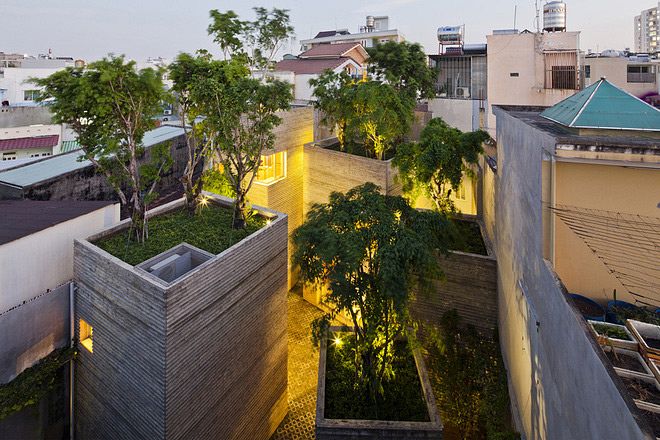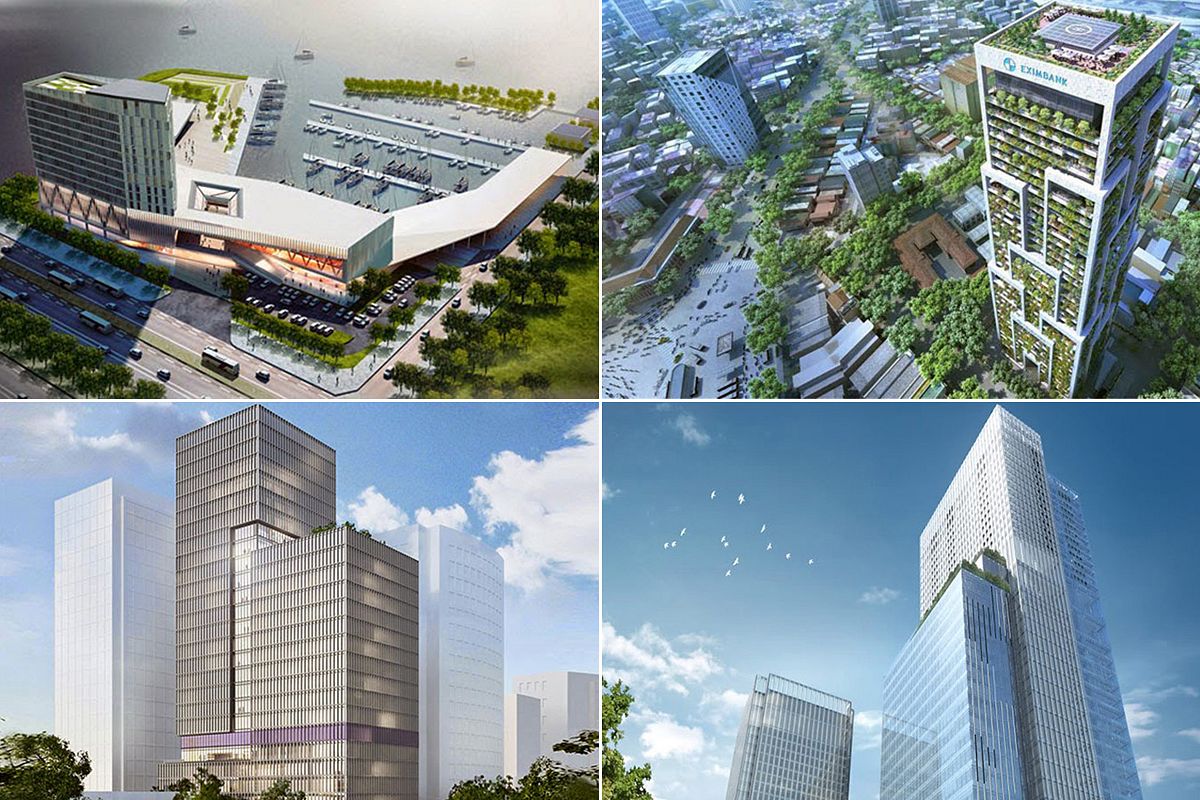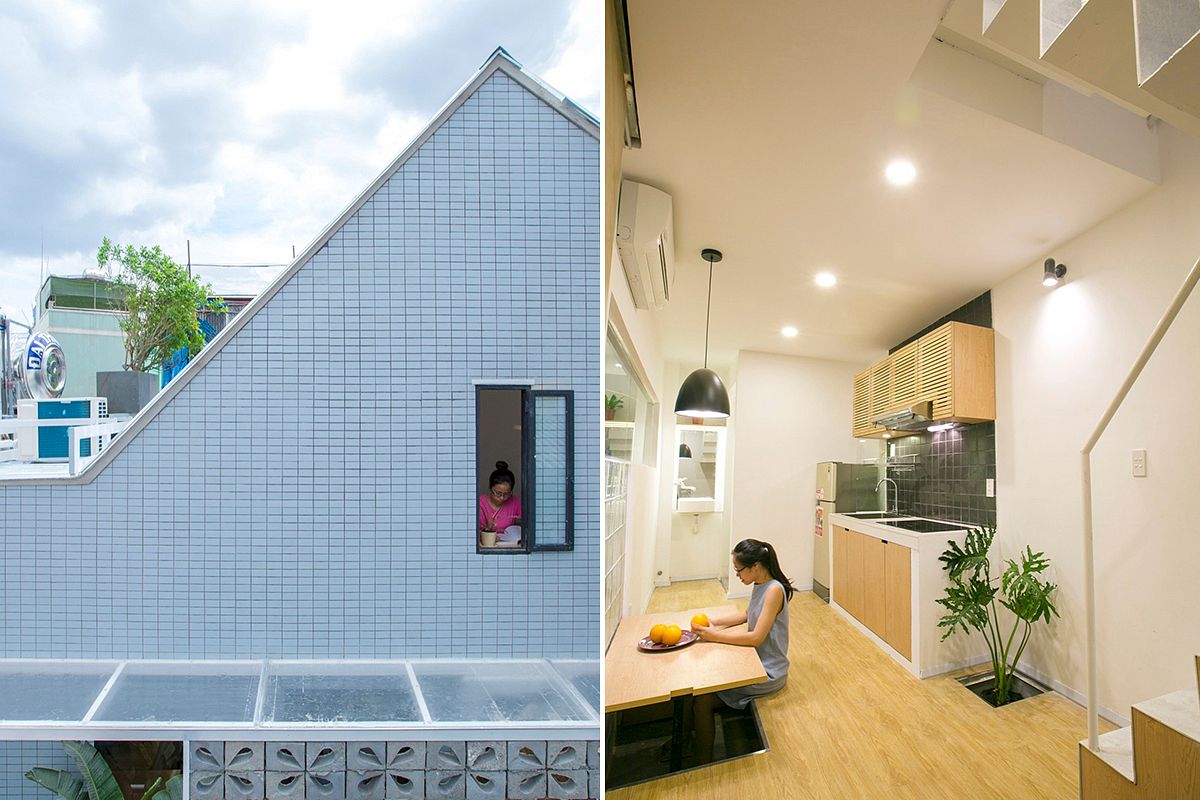Michael Waibel, the German human geographer, is back with another book in his series that takes a close look at the development of Southeast Asian cities from the perspective of both built environments and the people who live within them. This time, the series shines the limelight on Phnom Penh.
Like his previous books on Ho Chi Minh City, Da Nang and Hanoi (which won a Bui Xuan Phai Award), Waibel supplements his interviews and research with high-quality images, many of which are presented in a past-present format. Most of the older photos come from Waibel’s personal collection shot in the mid-1990s. As illustrated in the photos, much has changed in the Cambodian capital over the last two decades.

Photo by Michael Waibel.
“When I paid my first visit to Phnom Penh in 1996, I was told that it was too dangerous to leave the hotel after 8pm and to hire a contract killer would cost you only US$50," Waibel told Saigoneer via email. "The most striking thing for me was that all public places, including the riverside area, were littered and not at all maintained. I also observed that most of the ubiquitous French colonial buildings were dilapidated."
There weren't any modern high-rise buildings back then and the only structure that had been extensively renovated was the Royal Palace. Nowadays, much of the city has been renovated and is well-maintained, especially in the center where more tourists visit.
Though part of the same series as Waibel's work in Vietnam, creating the Phnom Penh book revealed stark contrasts to his previous research in Vietnam due to differences in social structure. Most importantly, the expert shares, is that the city is still suffering from the genocide carried out by the Khmer Rouge. “The members of the culture-interested bourgeoisie who did not get murdered fled the country. Only few came back. At the moment, the cultural scene is very young and still very modest in terms of absolute numbers. It is mostly driven by expat people and by NGOs,” he elaborated.

Photo by Daniel Samanns.
However, this isn’t halting major investment in Phnom Penh’s real estate market, which hit a record US$8.5 billion in 2016. “It seems that the whole city is a huge construction site. The design of many new buildings seems like just 'copy-paste' architecture from China fueling the upper housing market segment and ignoring the housing needs of the urban poor,” Waibel observed.
This is not to say that the city has completely lost its charm. According to Waibel, though the demolition of colonial buildings outpaces that of Ho Chi Minh City, the French colonial grid pattern remains well-preserved and there are still some outstanding architectural pieces to be found.
“For example, the Central Market is undoubtedly among the most significant buildings of 20th century Art Deco architecture in Asia. Even more amazing are the buildings which belong to the style called "New Khmer Architecture" that emerged after independence in 1953," Waibel said.
Vann Molyvann, the pioneer of this style, created distinct works that combined modernist design approaches in the tradition of Le Corbusier with the vernacular architecture of traditional Khmer elements.

Photo by Michael Waibel.
"It is a pity that in the course of modernization many of the French colonial and the New Khmer architecture style buildings have been lost. Both periods form an integral part of Phnom Penh urban identity, but prospects of a fast profit seem to be winning over the interest in preserving architectural heritage,” he lamented.
Similar to previous books in the Audi-funded series, the auto manufacturer has helped to host two events to promote the Phnom Penh edition, one at Audi Terminal and another at META-House, the local German cultural institution which receives funding from the Goethe Institute Bangkok. At these events, Waibel stressed that urban development should not only be about making money and maximizing profit, but should also serve the needs of people while contributing to urban quality of life.
By looking at the progression of the book series, one might think that a full Southeast Asian collection could become a reality in the future. But to the German academic, this was not the plan at the beginning.

Photo by Astrid Shulz.
“When I had the idea to do a book illustrating urban development of Ho Chi Minh City back in 2013, I had frankly no idea four years later, there would already be publications covering four cities in Vietnam and even in Cambodia,” Waibel told Saigoneer.
“It just happened because I had received enthusiastic feedback and had been able to convince companies to use the book as corporate gifts. I was so happy to receive the “Bui Xuan Phai – Vi tinh yeu Ha Noi” award in the category “Best Works” for the Ha Noi: CAPITAL City book publication in September 2015. This really meant a lot to me because this is a prize awarded by the Vietnamese and I was the first German ever to receive it," he added.
"In general, I would say that in the course of time this project developed its own dynamics and I guess that I am now indeed heading towards a collection of such books covering more and more cities in the region,” Waibel said.
Waibel is already planning the release of his next urban development book, this time focusing on Yangon. Though his previous works were published on an annual basis, the Yangon book is set to be released in early 2019 in order to reduce the work load and stress level. Waibel will, however, publish a lighter edition of the award-winning Hanoi book later this year.
Bibliographic information:
Waibel, M. (ed.) (2017) Phnom Penh: Capital City. Book series PAZIFIK FORUM of the Association of Pacific Studies; Volume 19, APSA Publishing House, Phnom Penh / Cambodia, 208 pages. ISBN: 978-9924-9151-0-2.
The book is available in Cambodia through Monuments Bookshops (US$24). Those wishing to buy the book in Vietnam (VND490,000) should get in touch with Michael Waibel (waibel_michael@yahoo.de).
[Top photo by Michael Waibel]














